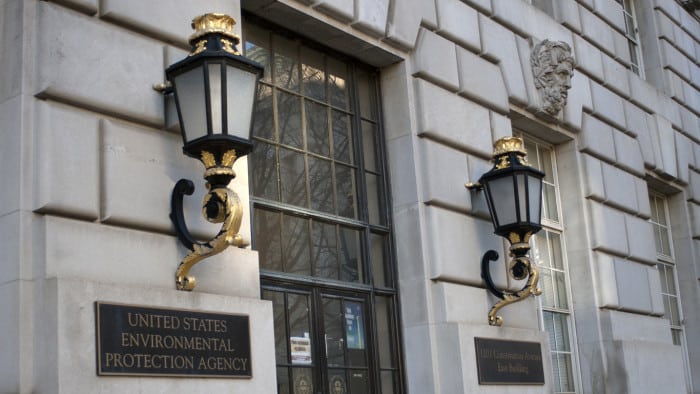
The Environmental Protection Agency on Friday denied five motions to reconsider its New Source Performance Standards. The rule, finalized last fall alongside the slightly more controversial Clean Power Plan, essentially mandates the use of carbon capture technology on any new-build coal-fired power plant.
The rule’s critics argue that carbon capture and storage is not adequately demonstrated and thus cannot be mandated. In determining CCS as the best source of emissions reduction (BSER), EPA relied heavily on data from the Boundary Dam Unit 3 project in Saskatchewan. BD3 encountered some hiccups in its first year of service, which opponents argue demonstrates the infeasibility of the technology.
The petitions, filed with the EPA by the Utility Air Regulatory Group (UARG), Ameren, American Electric Power (AEP), the state of Wisconsin, and the Energy and Environment Legal Institute (EELI), argue that BD3 did not reach its 90 percent capture design level; has cost Saskatchewan taxpayers significant amounts of money due to fines for underperformance; and that as a result of the difficulties with the project, owner SaskPower has reconsidered announcing plans to retrofit additional units at Boundary Dam.
“UARG, in essence, maintains that the post-proposal/post-promulgation performance of BD3 shows that the CCS system is not working, and, therefore shows that the technology is not adequately demonstrated at the facility,” the EPA’s response explains.
In response, EPA argued that “the suggestion that BD3 has experienced operational failures calling into question the reliability, feasibility, or demonstrability of the carbon capture technology is greatly exaggerated and essentially incorrect.”
The agency noted that after an overhaul of the BD3 plant last fall, performance has significantly improved. “The company has stated publicly that it expects the carbon capture system to be operational 85 percent of the time in 2016 (allowing time off for routine scheduled maintenance) and to capture 800,000 tons of CO2 over that year, a projected average capture rate of approximately 80 percent of design capacity,” EPA states.
“Operational issues in the first year of operation were related largely to ancillary systems and not to the carbon capture system, and appear to have been successfully resolved,” the decision further notes.
Furthermore, EPA noted, even when BD3 was not running as intended it was capturing at a greater rate than that required by the NSPS. “The retrofit carbon capture system at BD3 has demonstrated the ability to achieve carbon capture rates, over an extended averaging time, that are far in excess of the capture rates needed to comply with the standard established by the EPA for new steam generating EGUs under the subject rulemaking. The EPA thus believes that Boundary Dam’s performance corroborates rather than undermines a finding that partial CCS is an adequately demonstrated technology,” EPA stated.
Petitioner EELI expressed dismay over the timing of the denials, which come at what they believe to be an intestinally inconvenient time. “EPA’s decision to deny the E&E Legal petition, and four others, is unusual – indeed peculiar. Usually EPA takes years to address such petitions. Sometimes it ignores them altogether. Today, however, it fired off the five denials in a manner seemingly intended to upset the legal process. E&E Legal and several other parties have challenged the 111b rule in the U.S. Court of Appeals for the District of Columbia. That Court has issued a briefing schedule requiring initial briefs in about 90 days. The denial of the petitions imposes another legal layer on this process, requiring any appeals of the denials to be filed within 60 days, a month before merits briefs are due in the 111b litigation,” according to an EELI release.